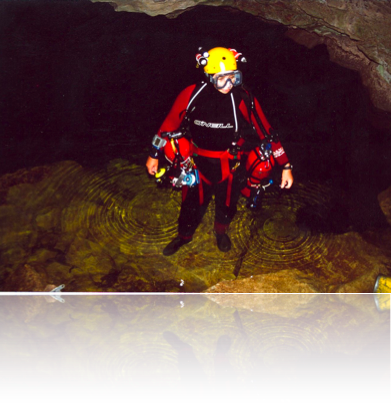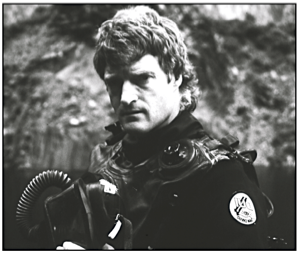
History of Cave Exploration and the Birth of the Foundation

The Rob Palmer Blue Holes Foundation was born out of a history that begin in the early 60’s by a Lithuanian gentleman by the name of Dr. George Benjamin. Residing in Canada, he made yearly summer trips with his son George to the Bahamas to explore these underwater caves systems called, ‘blueholes.’ Interestingly enough, the term, ‘blueholes’ came to be some 200 years earlier by the sailors that made their trans-atlantic crossing and their triangular trade between Bristol England, Charleston South Carolina, Cuba ,and the Bahamas. The ships that visited the Bahama Islands had no idea that in many cases when they were observing these blue to black circular patches on the banks of the Bahamas that they were dropping their anchor into the entrance of a cave system. As it has been discovered, many of the anchors had to be abandoned because they could not be recovered. The rusted anchors are usually found next to an array of old wine and rum bottles.
Dr. Benjamin was a chemist by
training and ran a photo
developing company in
Canada called, ‘Benjamin
Lab’s.’ He is also responsible
for designing the first under-
water housings for cameras.
The designs were out of
necessity because he wanted
to film these caves under-
water. As a result, he was the
first to bring images from
these caves to us. Finally
in the late 70’s Rob Palmer
who was conducting most of
his exploration in the cold caves of England, heard about George Benjamin’s adventures and contacted him about joining him in the Bahamas. George was very happy to have him join him except at this point in his diving career George had had enough. His words to Rob Palmer were, ‘ I’ll tell you what, I will no longer be diving in the Bahamas; I prefer to wear my lead on my hips and not in my body’ referring to his constant run in with drug runners who were shooting at anything that moved. He further offered Rob his collection of pictures and other information that he had gathered over the years. So, in other words, George was handing over the reins to Rob Palmer and Rob took them gladly.
So since the early 80’s Rob and his friends from England spent several months of the year in the Bahamas exploring and pushing some pretty extensive cave systems. His discoveries and adventures were captured in two of his earlier books, ‘Blue Holes of the Bahamas’ and ‘Deep into Blue Holes.’ The largest and most demanding of his expeditions was the Andros Project 1987. There he managed to gather a team of scientist and National Geographic to film them at work. As with most expeditions, the diving is fun but the managing of people’s ego’s is hell and thought better of ever putting one of those expeditions together again. Probably a wise move on his part.
I met Rob in 1992 on San Salvador where I was giving a presentation on the final work up of my masters work. I had read his books earlier and had hoped, with no expectations, that I would met him because it became clear that for me to continue my work on the dry caves in the Bahamas, I had to venture into the submerged one. Not only did I met Rob but three months later I married him. Two of the most unlikely people in the world actually got married and remained so until Rob’s death in 1997 during a dive in the Red Sea. However, before he died, and before we got married, I told Rob that I wanted to move to the Bahamas and continue my research into the underwater caves and if he wanted to marry me, he had to come along. He agreed and during our plans to move there, I came up with the idea of the Blue Holes Foundation. After we agreed that this foundation was a good idea, I went to my office to generate a logo. The foundation was made official when we became the first non-church , not-for-profit, NGO foundation in the Bahamas.
Since 1997, following Rob’s untimely death, I have taken over 100% of the reins. Thus far, I have been able to keep the foundation on the front pages of cave exploration and scientific discoveries and certainly on television with ten documentaries to date. I have assembled a team of great scientists and students alike, who have worked with me on projects mostly for credit towards their own academic work. Scientists from three continents and six different countries have contributed skills to the discovery of new species, bacterial and invertebrates from various cave systems throughout the Bahamas. Every trip into the Bahamas reveals new discoveries that in turn require a huge amount of research with the outcome potentially of changing certain chapters within Earth Science text books. However, we are in a race against one of the worst forms of cancer in the world, greedy developers. The very thing that made the Bahamas so special is vanishing as quickly as so many species are on this planet. People do not care about places they can not visit and certainly can not see. It is this lack of interest that is making this battle impossible to win. However, as long as the foundation is in operation, I will continue with the work I am doing and if anything, we at least will have documented these new discoveries that people in the future can read about and wonder.
Photo John Bantin

In Memory of Robert John Palmer
(1951-1997)
